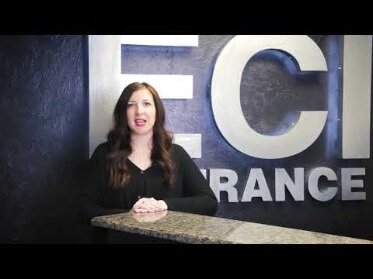Contents:


Your inventory tracking system should be tracking the inventory book balance. Conduct the physical inventory with at least two people. A third person can spot-check completed inventory sheets. Goods for resale are purchased through the purchase order process . When goods are received, the packing/receiving slip should match the invoice and materials you received. Reconcile the Inventory object code for products received to invoices received.
Storage areas should be locked when operations are closed. High-dollar items should be secured with locks separate from the common storage area. Label and store inventory in a manner that allows you to easily access items and determine the quantity on-hand. Separate and note obsolete or damaged products and record waste or damaged products on a waste sheet.
Division of Financial Services
These budgets allow you to make monthly cash flowprojectionsfor the coming year and also enteractualinflows and outflows as you progress through the year. This will allow you to compare your projections to your actual cash flows and make adjustments to the projections for the remainder of the year. After each physical inventory, adjust the general ledger inventory balance to the physical “actual” inventory balance.
Baker Hughes Company Announces First Quarter 2023 Results … – Baker Hughes
Baker Hughes Company Announces First Quarter 2023 Results ….
Posted: Wed, 19 Apr 2023 11:00:00 GMT [source]
Make sure all discounts are authorized by management and documented by the employee issuing the discount, so you can balance your Cash Short and Over account. You must track cash handling for your small business. Ideally, you want your income statement to show a 100 percent correlation between expected cash receipts and actual cash on hand, but this does not always happen. When you experience cash shortages or overages, you need to understand the source of the discrepancies. You will report these in on your income statement based on a special account created to track cash problems.
This occurs because the original check is counted in a deposit, but the returned check is not subtracted from cash receipts. Your company can track your debts to other companies, what you owe your employees, taxes and other obligations in this section. Asset is a resource or something of value that a company owns.
The excess of the bank’s long-term assets over its long-term liabilities is an indication of its solvency, its ability to continue as a going concern. Short-term assets known as current assets are not depreciated. Long-term assets are depreciated as an expense over the period being used. Too much of the balance sheet is tied up in the current assets; this can be a sign of the bad financial health of the company. Working Capital Management Of The CompanyWorking Capital Management refers to the management of the capital that the company requires for financing its daily business operations.
They are not used to satisfy short-term business needs. In contrast, short-term assets are used to fulfill short-term business requirements and converted into cash. Leverage – Looking at how a company is financed indicates how much leverage it has, which in turn indicates how much financial risk the company is taking. Comparing debt to equity and debt to total capital are common ways of assessing leverage on the balance sheet. Inventory includes amounts for raw materials, work-in-progress goods, and finished goods. The company uses this account when it reports sales of goods, generally under cost of goods sold in the income statement.
It’s the amount that would be paid to stockholders if a company was completely liquidated, meaning all assets were converted to cash and all debts and obligations were paid off. The short-term liabilities, also called current liabilities, consist of what must be paid within the next year. Long-term liabilities, or non-current liabilities, are what a company is responsible for paying for after one year. In short, liabilities are what a company owes and shareholder’s equity is what it would owe to owners if it were to liquidate all assets and pay off debts. Most retailers’ accounting systems have a cash over short account setup because they generally deal with cash sales everyday. An allowance for doubtful accounts is a contra-asset account that reduces the total receivables reported to reflect only the amounts expected to be paid.
Company
Thus, the account is used as the basis for a detective control. This information can be used to direct excess cash into interest bearing assets where additional revenue can be generated or to scheduled loan payments. Most statements are constructed so that you can identify each individual inflow or outflow item with a place for a description of the item. Statements like Decision ToolCash Flow Budget provides a flexible tool for simple cash flow projections.
Hutchins Roundup: Supply chain risk, childbirth and wage gaps, and more – Brookings Institution
Hutchins Roundup: Supply chain risk, childbirth and wage gaps, and more.
Posted: Thu, 20 Apr 2023 15:09:12 GMT [source]
When selling t account to a non-Cornell entity or individual for cash/check, record it on your operating account with a credit to sales tax and external income and debit to cash. When selling inventory and recording an accounts receivable, use an accounts receivable object code. Short-term assets are highly liquid, making them a good portion for analysis as any company cannot afford to have too many current assets on their balance sheet, especially cash in hand and the bank. Short-term assets are highly liquid, making them a good portion of the analysis.
What is shareholder’s equity?
Internal tampering could cause a business to be over and short in its accounting. Usually, however, the cause results from simple human error. Inventory shortage occurs when there are fewer items on hand than your records indicate, and/or you have not charged enough to the operating account through cost of goods sold.

By creating a cash flow budget you can project sources and applications of funds for the upcoming time periods. You will identify any cash deficit periods in advance so you can take corrective actions now to alleviate the deficit. This may involve shifting the timing of certain transactions.
Chapter 5 Accounting Review
Data from your balance sheet can also be combined with data from other financial statements for an even more in-depth understanding of your practice finances. Additional resources for managing your practice finances will appear in future issues of the PracticeUpdate E-Newsletter and on APApractice.org. If the vouchers total $130 but the fund needs only $125, the journal entry includes a $5 credit to the cash over and short account.

Changes in balance sheet accounts are also used to calculate cash flow in the cash flow statement. For example, a positive change in plant, property, and equipment is equal to capital expenditure minus depreciation expense. If depreciation expense is known, capital expenditure can be calculated and included as a cash outflow under cash flow from investing in the cash flow statement.
Cash can be classified as a long-term asset if they are designated for specific purposes such as a plant expansion project, or a long-term debt retirement, or as collateral. Negotiable instruments such as money orders, certified cheques, cashiers’ cheques, personal cheques, bank drafts, and money market funds with chequing privileges. Cash is the most liquid of the financial assets and is the standard medium of exchange for most business transactions.
Disadvantages of Short Term Assets
While they may seem similar, the current portion of long-term debt is specifically the portion due within this year of a piece of debt that has a maturity of more than one year. For example, if a company takes on a bank loan to be paid off in 5-years, this account will include the portion of that loan due in the next year. Includes non-AP obligations that are due within one year’s time or within one operating cycle for the company .
When goods are sold, properly record the transactions and ensure that the correct items are billed and shipped to customers. Record sales in the sales operating account with the appropriate sales object code. Transfer the inventory cost of goods sold to the operating account using a cost of goods sold transaction. The Inventory object code is used to record inventory value, reconcile inventory value after a physical inventory is performed, and transfer cost of goods soldto the inventory operating account.
See the object code list below for a detailed list of object codes used to record and adjust your inventory and cost of goods sold. The primary securities that banks own are United States Treasuries and municipal bonds. These bonds can be sold quickly in the secondary market when a bank needs more cash, so they are often called secondary reserves. They are used for ratio analysis and peer group analysis.
A compensating balance is a minimum cash balance in a company’s chequing or savings account as support for a loan borrowed from a bank . Certificates of Deposits (CD’s) are usually recorded as short-term investments. Illiquid assets cannot be converted to cash as easily. Illiquid assets might include a piece of machinery, property or supplies.
One of the major services of a bank is to supply cash on demand, whether it is a depositor withdrawing money or writing a check, or a bank customer drawing on a credit line. A bank also needs funds to pay bills, but while bills are predictable in both amount and timing, cash withdrawals by customers are not. Certificate Of DepositsA certificate of deposit is an investment instrument mostly issued by banks, requiring investors to lock in funds for a fixed term to earn high returns. CDs essentially require investors to set aside their savings and leave them untouched for a fixed period. The current or short-term assets are convertible and usable.
- If the voucher amounts do not equal the cash needed to replenish the fund, the difference is recorded in an account named cash over and short.
- A bank uses liabilities to buy assets, which earns its income.
- Examples are treasury bills (T-bills), money market funds, short-term notes receivable, and guaranteed investment certificates .
- If you extend credit to a customer, employees must know how to issue refunds or partial refunds.
Thejournal entryto record this sale would debit cash for $101, credit sales for $100, and credit cash over short for one-dollar. The income statement is a dynamic statement that records income and expenses over the accounting period. The net income for the period increases the net worth of the business . Accounts ReceivablesAccounts receivables is the money owed to a business by clients for which the business has given services or delivered a product but has not yet collected payment.
U.S. bipartisan stablecoin bill to allow central bank money for non … – Ledger Insights
U.S. bipartisan stablecoin bill to allow central bank money for non ….
Posted: Mon, 17 Apr 2023 10:54:46 GMT [source]
Identifiable intangible assets include patents, licenses, and secret formulas. Unidentifiable intangible assets include brand and goodwill. As such, the balance sheet is divided into two sides . The left side of the balance sheet outlines all of a company’s assets. On the right side, the balance sheet outlines the company’s liabilities and shareholders’ equity.
For example, fraud situations may be traced back to the people directly responsible for a cash register or petty cash box. The primary use of the cash over and short account is in cash-intensive retail or banking environments, as well as for the handling of petty cash. In these cases, cash variances should be stored in a single, easily-accessible account. This information is then used to track down why cash levels vary from expectations, and to eliminate these situations through the use of better procedures, controls, and employee training.
The Current Ratio and Quick Ratio are examples of liquidity financial metrics. Account adjustments are entries out of internal transactions within a business, which are entered into the general journal at the end of an accounting period. Learn about their different types, purposes, and their link to financial statements, and see some examples. Let’s assume Tom rang up a $100 pair of running shoes for $100, but he miscounted the cash received for the shoes. The accounting system will show $100 in sales but $101 of collections. The one-dollar difference goes to the cash over and short account.